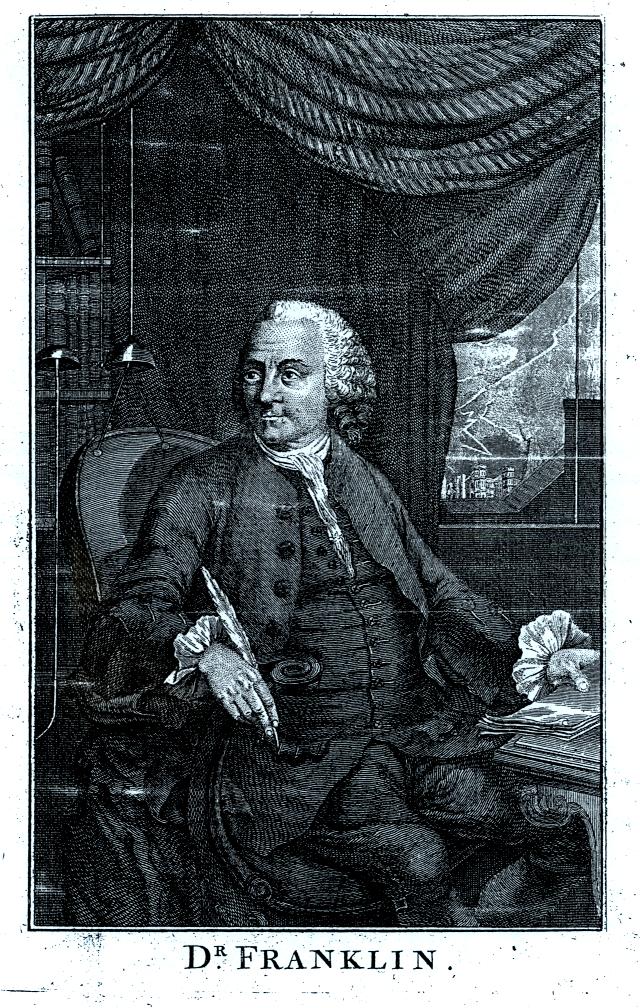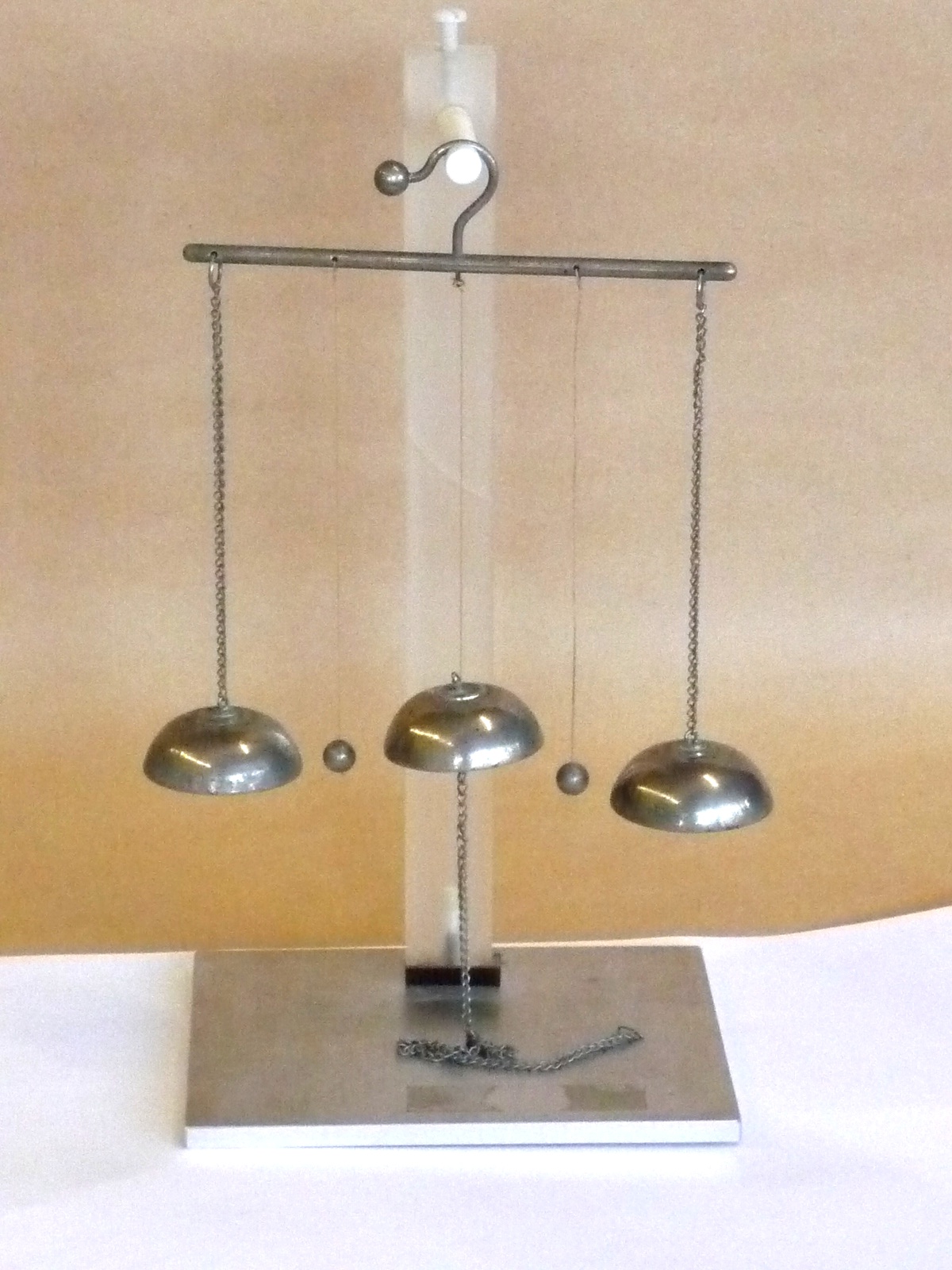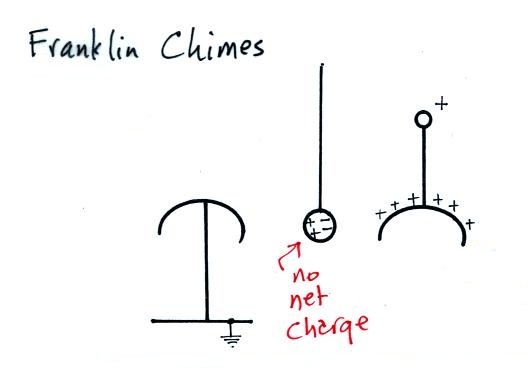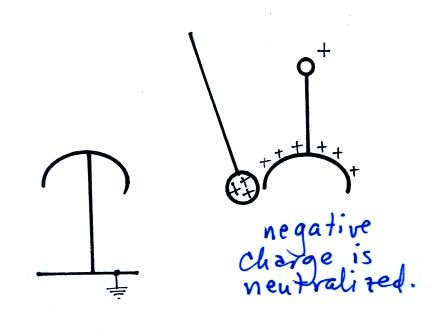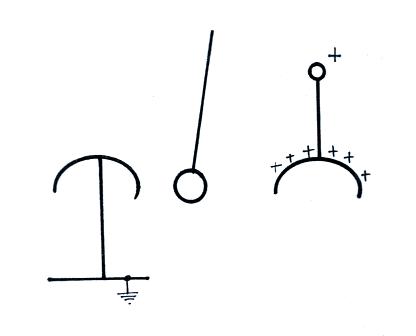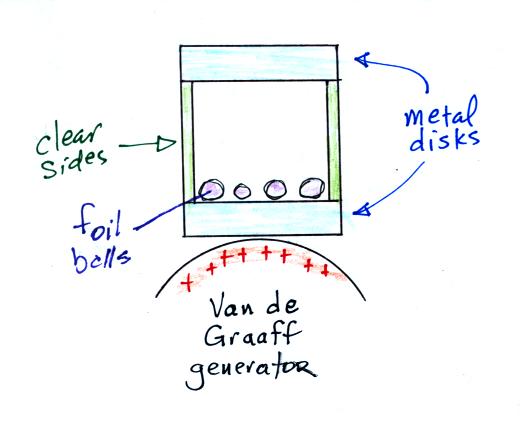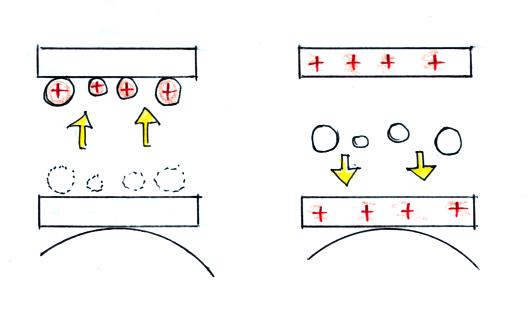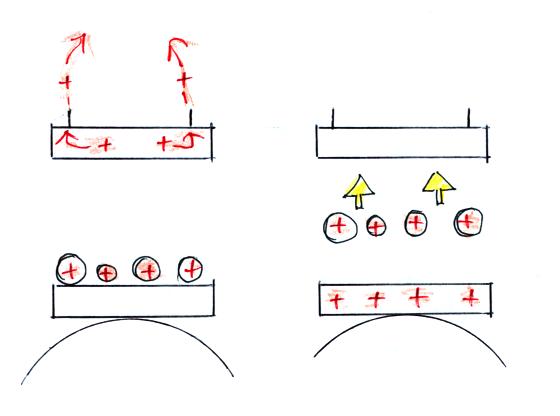Marcasite is a mineral and is sometimes called white iron pyrite. Here's a picture of a marcasite geode (source)
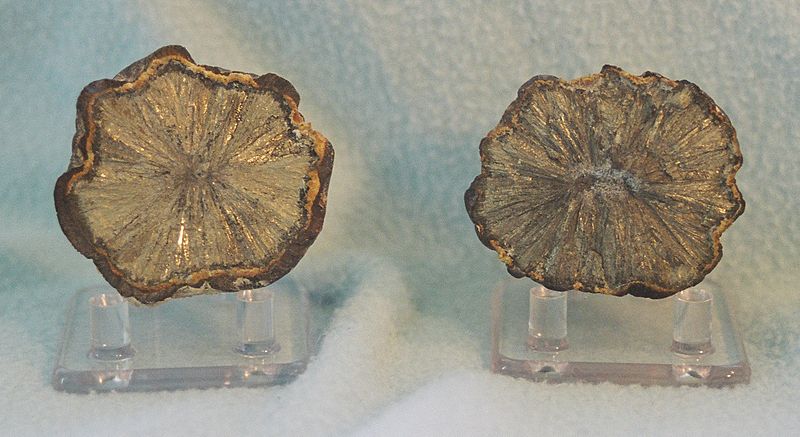
Throughout much of recorded history,
lightning was feared and often seen as a form
of punishment (though also sometimes associated with fertility -
eg.
birth of twins)
“symbols based
on
the concept of fire are
among the oldest
pictorial representations of lightning.”
(see Ref. (1))
“In many
ethnological representations from
prehistoric times
lightning is depicted …. as a stone falling from heaven or a
stone axe
hurled
from the skies.” (Ref(1)).
Wiktionnaire (the French version of Wiktionary) defines pierre de tonnerre as: "Boule de Marcassite" and "Hache polie" and gives a couple of synonyms: boule de tonnerre and pierre de foudre. [pierre is just the French word for rock, boule is a ball, hache means axe, foudre and tonnerre are lightning and thunder, respectively)
Marcasite is a mineral and is sometimes called white iron pyrite. Here's a picture of a marcasite geode (source)
And an image of a polished neolithic axe (source)

The belief was that lightning would never strike the same
location twice and thus either carrying one of these stones or
putting in on the threshold of a home would protect the bearer
or the structure from lightning.
The first real attempts at understanding
electricity and lightning
probably began in the late 1600s and 1700s. We'll
concentrate on
some of the contributions made
by Benjamin Franklin (Franklin was
born on
Jan. 17, 1706 in
Boston and died on April 17, 1790 in Philadelphia).
There were many people in the American
Colonies and Europe that were interested in and
actively studying
electricity at the time.
Electrostatic
machines
(friction
machines) were in wide use. Peter
Collinson
–
unpaid
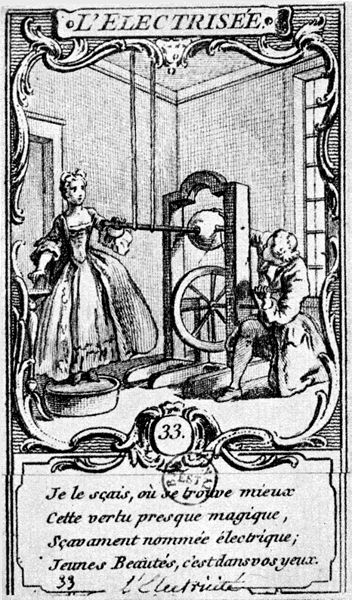
Franklin believed (correctly) that rubbing two materials
together did
not create electricity. Rather, the rubbing
somehow or another
"grabbed onto" and separated charges that already were
part of the
neutral materials. Material 1 might "tear"
electrons from
material 2. Material 1 would become negatively
charged and
material 2 would be left positively charged.
Priestley explains this more clearly and succintly:
“Dr.
Franklin
had
discovered … that the electric matter was
not created but collected by friction, from the
neighbouring non
electric
bodies”

Here is a short
description (and some explanation) of the experiment
from Wikipedia.
A popular but misleading demonstration with a Leyden jar involves taking one apart after it has been charged and showing that the charge is stored on the dielectric not the plates. The first documented instance of this demonstration is in a 1749 letter by Benjamin Franklin. Franklin designed a "dissectible" leyden jar, shown below, which was widely used in demonstrations.
The jar in the demonstration is constructed out of a glass cup nested between two fairly snugly fitting metal cups. When the jar is charged with a high voltage and carefully dismantled, it is discovered that all the parts may be freely handled without discharging the jar. If the pieces are re-assembled, a large spark may still be obtained.
When not properly explained, this
demonstration promotes the myth that capacitors store their
charge
inside their dielectric. This erroneous theory, due to Franklin,
was
taught throughout the 1800s, and is still sometimes encountered.
However this phenomenon is a special effect caused by the high
voltage
on the Leyden jar. In the
dissectible
Leyden jar, charge is transferred to the surface of the glass
cup by
corona discharge when the jar is disassembled; this is the
source of
the residual charge after the jar is reassembled. Handling the
cup
while disassembled does not provide enough contact to remove all
the
surface charge.
Here's a pretty good video of
the
demonstration.

This was demonstrated using a Van de
Graaff
generator. We first position a grounded metal rod with
a rounded
tip a few centimeters from the top of the generator.
Periodically, once
sufficient charge builds up on the dome of the generator, an
audible
visible spark will jump to the tip of the ground rod.
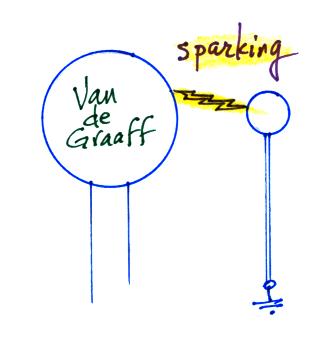 |
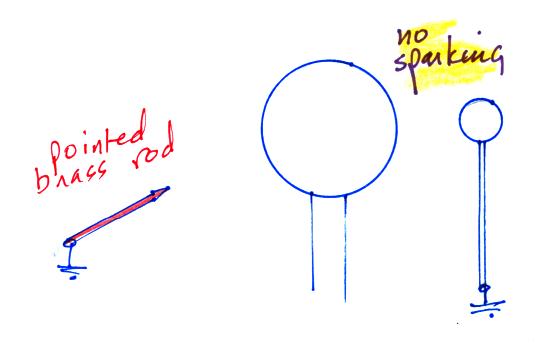 |
If a pointed, grounded rod is
brought to within about 20 centimeters of the Van de Graaff,
the
sparking to the grounded round ball stops. The pointed
rod is
drawing off electricity from the generator before sufficient
charge is
able to build up and spark across to the grounded ball.
The terms drawing off or throwing off electricity simply
refer to
whether current is flowing to or from the pointed rod.
"To determine the question, whether
the
clouds that contain
lightning are electrified or not, I would propose an
experiment to be
tried
where it may be done conveniently. On
the
top of some high tower or steeple, place a kind of
sentry-box big
enough to
contain a man and an electrical stand.
From the middle of the stand let an iron rod rise and
pass
bending out
of the door, and then upright 20 or 30 feet, pointed very
sharp at the
end. If the electrical stand be
kept
clean and dry a man standing on it when such clouds are
:passing low,
might be
electrified and afford sparks, the rod drawing fire to him
from a cloud. If any danger to
the man should be
apprehended (though I think there would be none) let him
stand on the
floor of
his box, and now and then bring near to the rod the loop of
a wire that
has one
end fastened to the leads, he holding it by a wax handle; so
the
sparks, if the
rod is electrified, will strike from the rod to the wire,
and not
affect him.”

The experiment was performed for the
first time on May 10, 1752 in
Marly-la-Ville (near Paris) by a retired dragoon name
Coiffier (Thomas
Francois
Dalibard, a naturalist, was absent). Dalibard read an
account of
the experiment to the French Academie des Sciences on May
13,
1752. You can read a short description of the experiment (in
French) on
the Commune
de
Marly La Ville website.
The experiment was widely repeated
LeMonnier held a 5 m wooden pole with iron wire windings while standing on pitchcake. Sparks were seen coming from his hands and face.


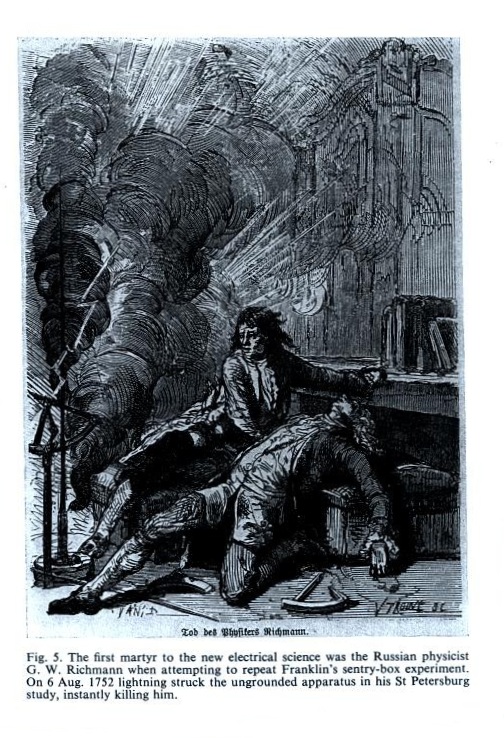
“There is
something however in the experiments of points,
sending off, or drawing on, the electrical fire, which has
not been
fully
explained, and which I intend to supply in my next. For
the doctrine of
points
is very curious, and the effect of them truly wonderful;
and, from what
I have
observed on experiments, I am of opinion, that houses,
ships, and even
towns and
churches may be effectually secured from the stroke of
lightning by
their
means; for if, instead of the round balls of wood or
metal, which are
commonly
placed on the tops of the weather-cocks, vanes or spindles
of churches,
spires,
or masts, there should be put a rod of ion 8 or 10 feet in
length,
sharpen’d
gradually to a point like a needle, and gilt to prevent
rusting, or
divided into a number of
points, which
would be better – the electrical fire, would, I think, be
drawn out of
a cloud
silently, before it could come near enough to strike; only
a light
would be
seen at this point, like the sailors corpusante.”
and my favorite quotation:
"It has pleased God in his goodness to mankind, at
length to discover
to them the means of securing their habitations and
other buildings
from mischief by thunder and lightning ..."
Here Franklin was anticipating and seeking to counter
opposition from
religious authorities (lightning was considered by
many to be a form of
divine retribution).


